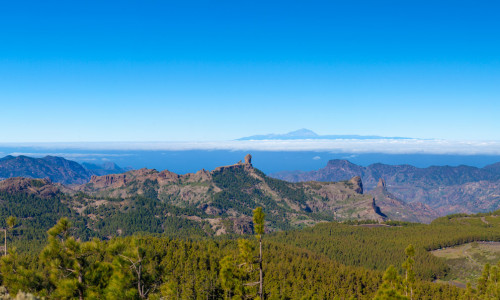History and Interesting facts about Gran Canaria
History and interesting facts
Unfortunately, very little of Gran Canaria's indigenous culture and society, formerly known as Canarii, survived the conquest of the Crown. The Castilians once had the victory, destroyed everything and divided the land and water among those who were involved in and financed the conquest.
Later, the whole society was re-structured with a socio-religious model that would later serve as the colonial model for colonization and would finally be recognized as the administrative capital of a territory.
However, the good times turned around and Gran Canaria went into the XVII Century poor and exhausted, and began a long journey to achieve self-subsistence and economic recovery that would take in the whole century.
Society became increasingly structured and more rigid thanks, among other things, to the sale of public posts and council offices, which became hereditary, leaving local power in the hands of well-defined social elites as early as the second half of the previous century.
It was already in the 18th century that the island began to recover and did so in a fairly positive way, although it never went back to being the same as before or recovered its position as administrative capital.
Another factor that is growing in this century and will be decisive in later ones is emigration, especially to America, the result of socio-economic problems on the one hand and regional regulations on the other, and which will help to establish numerous population centres on the new continent. Thus, the Canaries spread along the shores of the Rio de la Plata, Spanish Louisiana and the Greater Antilles, creating cultural links that last to the present day.
Despite the archipelago's isolation, Gran Canaria has played an important role throughout its history as a maritime support base for transatlantic travel from Christopher Columbus' days to the present-day.
Nowadays the economic engine of the island is Tourism, which has largely helped in the building industry. On the other hand, agriculture is decreasing in importance and there are more disadvantages for exportation.
But there are some things that never change, such as the importance of Puerto de la Luz and Las Palmas which is considered one of the most important in the Atlantic due to its surface, commercial activity and traffic.
Interesting facts:
- The name of Gran Canaria comes from a misconception that the island was the biggest in size of the whole archipelago. Also, other theories claim that it comes from Gran Can - canes: dogs, due to the great Presas Canarios, a native breed of dog that inhabited the island.
- In Valley of Agaete is the only place in Spain and Europe where coffee is grown!
- The Botanical Garden of Gran Canaria is the biggest in Spain.
- Great artists like Alfredo Kraus (tenor) or Benito Pérez Galdós (writer) were born here and are honoured in two of the most visited cultural places in the capital: The Museum House in Pérez Galdós and the Auditorium in Kraus.




